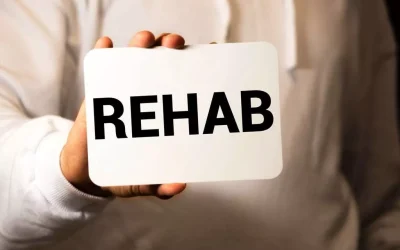Our goal at Benchmark Commercial Lending is to provide access to commercial loans and leasing products for small businesses.
Content
For some those offenders who are motivated for abstinence and capable of handling some degree of autonomy SLHs might be a viable and effective option for recovery that is currently underutilized. Second is to expand on these findings by considering potential implications of our research for inpatient and outpatient treatment and for criminal justice systems. We also describe plans to conduct studies of resident subgroups, such as individuals referred from the criminal justice system. Sober house, recovery house, sober living house – three names, one basic idea. Different areas use different terminology, but all three describe a sober living environment where residents can expect to share a home with like minded individuals in recovery, free from drugs and alcohol.
We suggest that efforts to translate research into treatment have not sufficiently appreciated how interventions are perceived and affected by various stakeholder groups (Polcin, 2006a). We therefore suggest that there is a need to pay attention to the community context where those interventions are delivered. Prison and jail overcrowding in the U.S. has reached a crisis point. Each year more than 7 million individuals are released from local jails into communities and over 600,000 are released on parole from prison (Freudenberg, Daniels, Crum, Perkins & Richie, 2005).
Sober houses are homes for those in recovery from drug or alcohol addiction. Most residents of recovery houses have completed a treatment program, but not necessarily. Residents in sober living homes live as a family unit, follow house rules, and pay rent to the sober house operator. Most importantly, residents must stay clean and sober while the live in the home.

Some sober houses charge an initial deposit or fee, and these fees range from $25 to $300 or more. Prices for recovery homes tend to follow the overall real estate market. Sober living homes may accept residents who are new to the rehab process, but most applicants how does sober living work have gone through a program before applying. This makes sense; residents must be able to stay sober in order to live the sober house. Recovering addicts who have sobriety under their belt and tools to stay clean are more likely to succeed in sober living.
It often acts as a bridge between rehabilitation and preparing members to live independently – drug- and alcohol-free. While residents aren’t required to have completed a rehab program before entry, many of them have. The tools that individuals learn in intensive rehab programs may set them up for more sustainable success in a sober living house. Perhaps the most obvious benefit of sober living homes is that they ease the transition back into everyday life. They bridge the gap between treatment and mainstream society, helping a person to ease back into the buzz of the “real world” – work, school, nightlife, relationships, and more.
Sober living homes help residents learn independence while offering guidance and support throughout the process. Residents have freedom of choice while living in these homes and can use the opportunity to make healthier decisions for themselves before living on their own. Similarly, residents will have access to 24/7 support through housing managers and peers, specifically when mental and emotional issues arise during recovery. By using the narratives of residents, the researchers wanted to explore the experience of being in a sober living house from the perspective of the people in recovery.
Whatever the source of the referral, take a tour of the facility and talk to the people living there to decide if it’s the right fit for you. The cost varies by the type of sober-living environment and length of stay. Some sober-living homes have a base rate with additional costs for added services.

Research has discovered that communal living can help decrease substance abuse and incarceration rates, and increase employment rates. It can also help individuals hone their coping skills, learn how to communicate effectively, and trust themselves. To no one’s surprise, going from a residential treatment program to navigating reality outside the treatment setting can be quite a jump. Luckily, many treatment resources are available to help make this transition a bit easier.
Living in a sober house can support sobriety and help alcoholics and recovering addicts adjust to new freedoms after a treatment program without the temptations of an unhealthy environment. Many men and women will live in a sober house for three to six months, even up to a year, while they build the skills and character to confidently live independently. Many individuals attempting to abstain from alcohol and drugs do not have access to appropriate housing that supports sustained recovery. Our study found positive longitudinal outcomes for 300 individuals living in two different types of SLHs, which suggests they might be an effective option for those in need of alcohol- and drug-free housing.